 Your new post is loading...
 Your new post is loading...
Banner ads are dying.The future of online ad dollars is native advertising.Native advertising is content as the ad, specifically content that would or could normally be native to the placement of the ad. The term native advertising has risen to prominence over the last couple years and there are varying definitions. We are going to focus on three main types of native ads.Sponsored ArticlesSponsored LinksSocial Ads...
The public relations industry is known for a lot of things: media relations, press conferences, event management, crisis communications, and, more recently, social media strategy and community management.
But there’s one thing that many communicators haven’t been particularly well-known for: creativity. At best, PR has been put in a box to amplify creative ideas developed by others. At worst, we’ve been accused of “spinning” stories or doing “stunts” to make a splash.
That’s changing. Over the last 18 months or so, branding, advertising and digital agencies’ dominance over creative campaigns has started to wane. Clients are increasingly turning to PR agencies to come up with the “big idea,” as the discipline is now in a good spot to call the shots on creative development. Here’s why.
NewsCred has launched a newsroom for brands seeking content marketing.
Who says no one's investing in journalism anymore?
NewsCred, a six-year-old New York-based content marketing company known for licensing articles from The Economist and the New York Times to brands, is creating its own newsroom with 500 journalists.
The writers, photographers, videographers and digital artists on contract with NewsCred will be at the disposal of brands seeking original content. The company is being selective about whom it hires. The pay is also decent: a minimum of $500 per blog post and $1,000 per article. The journalists get 100% of the fees for such articles. A NewsCred rep says the content is a value-add; the company's real business is in licensing its software platform, which a brand can use to upgrade their marketing outreach....
Journalists pay heed – your next career could be as managing editor of a brand’s community.
That’s right. Brands, which inspire everything from love to hate, inspire consumers to talk to them through the web’s multi-dimensional system, making the conversation – and not the advertising – the most important thing a brand must negotiate and nurture. Brands gather communities around them. And where there are communities, there is a need for truth. And truth makes the best stories.
The true storytellers need to live in brands, and they must practice the trade made special by journalism – telling the truth of your community, and helping them tell stories. And the people who perform that task best are truth seekers like journalists. Not message flackers.
Real journalism – not the tawdry Fox News type or the panic of a breaking news story involving a shooter, when CNN and its ilk, in a rush to be first, get more facts wrong than right – doesn’t shock or manipulate. Real journalism, as it has been practiced by some of the world’s best writers for centuries,...
David Carr’s weekly column for The New York Times carries an intriguing title: “The Media Equation.” With 430,000 Twitter followers, he’s a unique journalist exploring the world of media for the larger Times brand, with its 9.5 million followers. It’s similar to the 1,200 individually branded FORBES contributors — and staff reporters, too — who now write about specific business topics under our 96-year-old umbrella brand.
I love the rubric attached to David’s newspaper work. FORBES itself is trying to figure out the media equation in an era when anyone can publish anytime — no trucks, planes or satellites required. Our still-evolving solution disrupts century-old newsroom thinking and processes. It also breaks with tradition in how certain marketing messages are sold and integrated on our growing news platform....
... Now the new rage is “native advertising,” which is to say advertising wearing the uniform of journalism, mimicking the storytelling aesthetic of the host site.
Buzzfeed, Forbes, The Atlantic and, more recently, The New Yorker, have all developed a version of native advertising, also known as sponsored content; if you are on Buzzfeed, World of Warcraft might have a sponsored post on, say, 10 reasons your virtual friends are better than your real ones.It is usually labeled advertising (sometimes clearly, sometimes not), but if the content is appealing, marketers can gain attention and engagement beyond what they might get for say, oh, a banner ad.Mr. McCambley is wary.
He says he thinks native advertising can provide value to both reader and advertiser when properly executed, but he worries that much of the current crop of these ads is doing damage to the contract between consumer and media organizations....
We speak to two of the people involved in creating the news outlet's latest Snowfall-like immersive multimedia project....
Last week The New York Times website published a story called The Jockey, followed by publication in the sports section of the print edition on Sunday.
The Jockey is the latest immersive or multimedia reading experience created by the news outlet that brought us Snow Fall. The Jockey tells the story of Russell Baze, the first North American jockey to ride in 50,000 races, and does so through long-form text, video and moving graphics.This immersive story has a sponsor. Some have interpreted this as native advertising or sponsored content, and AdAge writes that these custom ad units are "designed to better fit the new environment" than the advertising within Snow Fall...-
Using storytelling to sell a product, brand or service isn’t in any way a new concept. The developing technology around us however, has given us new ways in which to engage and interact with our audience. Content marketing has become increasingly important as brands realize that in order to speak to their customers they need to invest in content that matters. The more brands have begun to focus on quality content, the more it becomes clear that storytelling is a key component to the content marketing process.
You wouldn’t (willingly) sit through a terrible film, or keep reading a book that you thought had a terrible plot, so why should people read your content if it doesn’t have a good story behind it?...
Does this signal the beginning of the end for Forbes as a knowledgeable source of business information? Have they finally "jumped the shark" on their way to the exit? "Jumping the shark" is actually an expression that goes back to the TV sitcom series, Happy Days. It was a show that pictured everything as rosy and happy, with neat little endings that were all nicely tied up in twenty-two minutes. The chief influencers on that show were "The Fonz," who only had to give you a look to let you know you were in trouble, and Mr. Cunningham, who set down the rules of the family.
In the midst of its ten-year run the writers must have gotten tired or were negatively influenced by the Hollywood decision-makers, when they inexplicably decided to have their characters travel to Los Angeles. Well, one thing leads to another and Fonzie ends up responding to an assault on his courage by taking to water skis (wearing his leather jacket of course) and jumping over a shark.
The stunt was so ridiculous and out of character that "jumping the shark" eventually came to be known as the moment when a television show begins a decline that is beyond recovery. While Happy Days bravely soldiered on for a few more years, it was never really the same in the minds of viewers and critics. Since that time the meaning has been broadened to define the moment when a brand or creative effort begins to lose the qualities that initially defined its success. Some still refer to "New Coke" as the moment when the Coca-Cola Company jumped the shark....
... When most people think about the word story, they think about a narrative like “ Jack and Jill went up the hill.” Most of us have been taught that there are two basic kinds of story: fiction and nonfiction.
Metastory is actually a third kind of story. Metastory is story that is told through action. It is not a story that you say, it’s a story that you do. Every individual has one. And every company has one too.
The reason this is so important is that people are already innate storydoers themselves. They use the story of your brand or business to tell part of their own personal metastory. Put another way, people don’t buy products; they take actions that help advance their own personal metastory. As we grow up, all of us learn to manage our own metastory through our actions — the car we drive, the clothes we wear. All of these choices are components that we know people around us will use to piece our metastory together....
In 2014 "the press as you know it has ceased to exist. 20th century news organizations are an afterthought." See No. 18 below. Our contributor model, now three years in the making, continues to grow and evolve.
FORBES BrandVoice is widely considered a breakthrough product in the much-talked about world of native advertising. With 25 million monthly visitors (as measured by comScore), our audience is bigger and more engaged than ever. Still, disruption rules the news industry, advertising and the public relations business, too. With all the turmoil, here are 18 things on my mind as we prepare for product releases this fall....
....Content developed in near-real time and linked to a buzz-worthy story or topic can generate a spike in conversation. But short-term buzz doesn't necessarily translate into long-term engagement. The most effective content marketers use this tactic within the confines of a broader marketing strategy, and master the art of connecting the brand essence, voice and message to the cultural headlines of the day. Without the broader connection, a brand could come off as nothing but a noisemaker and risk cheapening its image.
Successful newsroom-generated content can be thought of as a three-legged stool, supported by curated third-party content, recycled user-generated content and original/custom content. The first two are easily addressed by building a well-oiled social-listening engine, which many leading brands have established at this point.Most difficult is generating original content. Brands have been accustomed to publishing five great pieces of content per year, in the form of traditional media ads developed by their advertising agencies. Now they're required to publish five great pieces of content per week, which is a fundamental shift for which they are not built....
While Twitter and texting appear to be reducing our communications skills to the level of a grunt, there has been a spate of TV spots in which the power of the long copy has been applauded by the industry, consumers and award juries alike.
Spots like the multi-lauded “Born of Fire” spot for Chrysler by Wieden +Kennedy, which gave Detroit, a city considered lost for decades now, something to be proud of. These words didn’t just sell a car, they uplifted an entire city.I remember watching this ad in the jury room in Cannes and feeling the hairs on my arm stand up. It was also interesting that the power of the words were not lost on the international jury. Jokes and special effects used to be the way to win at Cannes. Maybe not so anymore....
|
While most of the impact of technology on marketing has been tactical so far, over the next decade or so there will be a major strategic transformation.
Today, however, digital technology has enabled us to retarget consumers when they respond to a message and that has changed marketing forever. In effect, we must make the shift from grabbing attention to holding attention.
That means that brands will have to learn to be more like publishers and develop content skills. It also means that marketers will have to create a genuine value exchange rather than just coming up with catchy ad slogans and price promotions. Like it or not, we’ve entered a post-promotional paradigm....
Facebook, Twitter, Pinterest are all moving to native ads. The native-social rush is on.
BIA/Kelsey estimates that social ad spend will reach over $10 billion by 2017 and that up to 40% or more of those outlays will go to native ads. In the social context, we define native ads as ads that are seamlessly integrated into a user's feed and are nearly indistinguishable from organic content.
...On Facebook, native ads in the News Feed generate 49-times higher click-through rates and a 54% lower cost-per-click than traditional placements in the right-rail sidebar. LinkedIn is making major investments in its native strategy and Pinterest is piloting native ads on its platform.
According to Jan Rezab, CEO of Socialbakers, a social media analytics company that works with Fortune 100 brands, "In the future, all advertising on social media will be native in-stream ads. The right rail and banners will disappear altogether."...
Lippincott, a brand strategy and design firm, and Hill Holliday, a full-service advertising and marketing agency, released “Welcome to the Human Era,” a report that examines the fundamental decline of consumer trust and the subsequent shift in how brands need to act to garner lasting connections with their customers. The report highlights key characteristics of Human Era brands and defines the behaviors of companies both big and small that are able to break through in this new environment. The full report can be accessed here.
The report asserts that brand-building today can no longer be led by messaging and advertising alone, but rather requires both “story” and “experience” to work together to drive brand favorability. Key characteristics among Human Era brand leaders are that they: have a deep cultural trait of customer empathy; talk and act like people; are open, real, and even flawed; aren’t boring; care intensely about the little things; and empower individuals to be the brand....
Here's why native advertising is the opposite of porn.It's a do-over from the past 20 years of online advertising. It's a bold new path for brands and publishers. It's the hoary advertorial dressed up in 21st-century clothes.
Native advertising is at least some of these things. Top publishers and brands met in Washington, D.C., on Wednesday for an American Press Institute summit to determine whether it is also the industry's salvation.
Fittingly enough, the host of the event was Atlantic Media, whose flagship publication, The Atlantic, introduced the native-advertising industry's first scandal when it ran an article entitled “David Miscavige Leads Scientology to Milestone Year" on its site in January. Commissioned by the Church of Scientology, the article was labeled as advertising, but raised hackles among fans and critics. A day later, Atlantic Media issued a three-word apology: "We screwed up."...
The five W’s of journalism remain a cornerstone of newsgathering today, but I have been increasingly thinking about five C’s as well: Context, Conversation, Curation, Community and Collaboration.
Below I try to define each, with particular attention to how they intersect, and I link to one good piece of writing on the topic. Nothing about this is supposed to be comprehensive, nor is it particularly original, it’s just a list of the things I’m thinking about right now and an invitation for you to add your thoughts...
In preparation for one of CMI’s upcoming reports, I’ve had the pleasure of meeting with a number of companies that are in what’s being called the “native advertising” space. Through this experience, I’ve come to the conclusion that, while the technique can potentially create significant value, native advertising is actually neither “native” nor “advertising.” It is simply one aspect of the larger discipline we know of as branded content marketing. Native by any other name According to Wikipedia (which I chose not because of, you know, Wikipedia, but because it seemed to be the only place offering one up), native advertising is defined as: “…a method in which the advertiser attempts to gain attention by providing valuable content in the context of the user’s experience. Native ad formats match both the form and the function of the user experience in which it is placed.”
In short, native advertising takes content and places it in the context of a publisher’s site. So, whether you think of it as an advertorial, a paid guest post, a sponsored tweet, or just a really extensive ad, it’s basically paying for your engaging branded content to have a prominent and contextual place on somebody else’s platform.
An interactive media feature showing Hewlett-Packard's new shipping corridor along the route of the ancient Silk Road.
Via Marie-Sophie
With HuffPost Partner Studio, the massive news aggregator and blog engine is getting into the advertising game...
Publishers are crazy for native advertising, but they’re stuck with a problem: Who is going to create it?
That’s why publishers like Vice and Gawker have begun partnered content-creation arms. Add The Huffington Post to the mix. This week it is officially taking the wraps off its new in-house branded content agency, HuffPost Partner Studio. Its charter is to make advertising that looks like regular Huffington Post content. For example, there’s this infographic for “Paranoia,” a new film with Harrison Ford and Gary Oldman, and this L’Oréal editorial about why “your daughter is a dork, and that’s okay.
”While HuffPost has hosted sponsored content for a while, this new in-house agency will do things a bit differently than how it previously handled sponsored content....
For an upcoming magazine column on the intersection of technology and publishing, I interviewed a number of smart thinkers about how brands should be self-organizing to create engaging, provoking, and ethical content (as opposed to inane social media filler).
One of the interviews I conducted was with Neil Chase, former New York Times editor and SVP at Federated Media, now a content strategy consultant (and friend). He had a lot to say on the subject of brand publishing — more than I can fit into my column — and I think every company ought to take heed. So I decided to post our conversation in its entirety....
I recently gave a presentation at the Digital Innovators Summit in Berlin on how FORBES is disrupting the traditional news media.
My solution was to tell the FORBES story of the last 20 months — the successes, challenges and learnings of a 95-year-old startup helping to lead journalism into the future.
I’ve boiled it down to nine key points that capture what we’ve done to reinvent Forbes.com and put our authoritative journalism at the center of a unique social media experience....
I think advertisers are smart to want to have their ad copy look, read, and sound more like journalism. It’s a form of flattery for what we do, and although trust has waned in our profession recently—the public sees that our journalism is not as good as it used to be–it means that at least that the Mad Men of Madison Avenue think we’re more trustworthy than they are.
There’s an informative website, brandjournalists.com, that explains what these new kinds of ad producers do and why. It’s instructive.At base what they say they are doing is story telling. And, as they say, a good story is the essence of human communication. We journalists know that, or at least we should. If you can tell a good story about a company or organization, that’s likely to sell more product than the best old-hat sales pitch, the brand journalists reason.
They’re right. I agree with the ad folks that most companies have a good story to tell. I used to cover business and I never found a business I couldn’t find something interesting and newsworthy to write about.But let me show you how journalism is different than “brand journalism” or other kinds of sponsored content. This story you might even know....
Piggybacking onto major news events can give brands a shot at instant relevance. Or immediate embarrassment.Last week, a German lingerie company circulated some racy but sub-par ads that attempted to capitalize on the Edward Snowden whistle-blower story. They were created quickly, though not very cleverly, and got some play on some major sites — all free media for the brand. No harm done.
This rapid-response marketing has increased greatly in the last few years, and will continue to increase, and the ads and messages will only get faster and faster.The undisputed leader on the quick-ad draw is Oreo....
|
 Your new post is loading...
Your new post is loading...
 Your new post is loading...
Your new post is loading...





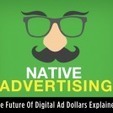


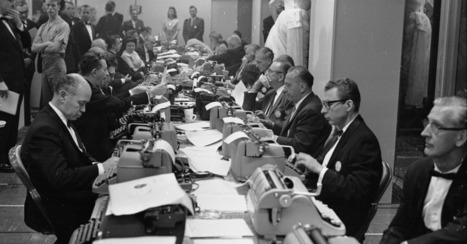



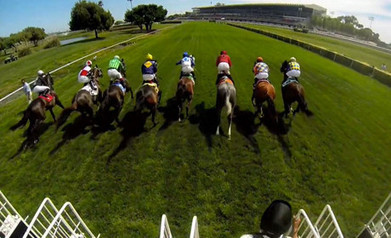



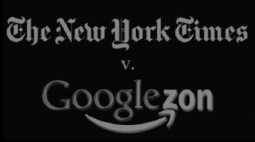



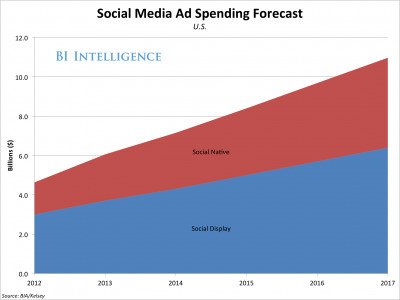
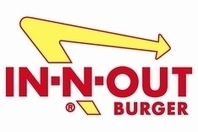
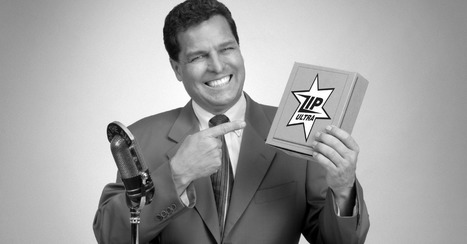
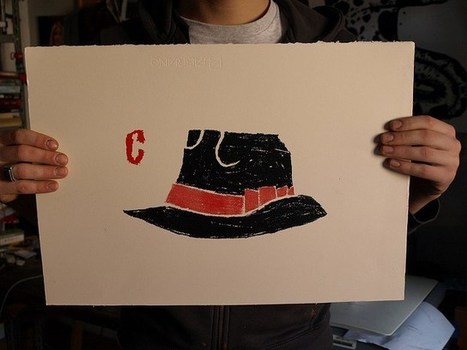



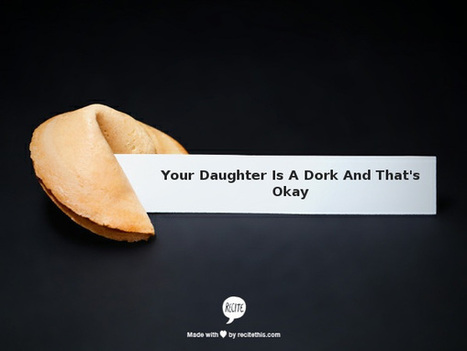









Good read for PR and marketing types with excellent examples of each type of native advertising.